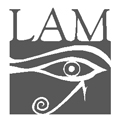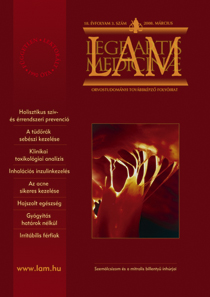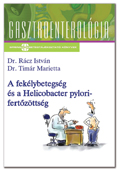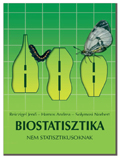The eLitMed.hu medical portal uses computer cookies for convenient operation. Detailed information can be found in the Cookie-policy.
Lege Artis Medicinae - 2008;18(03)
Content
[Holistic approach to cardiovascular prevention]
[Cardiovascular diseases, primarily the organic manifestations of atherosclerosis, such as coronary artery disease, ischaemic stroke, and peripheral arterial diseases, represent the largest healthcare problem in the developed countries, since the mortality, disability, and need for hospitalisation caused by them constitute a bigger burden than that caused by all other diseases combined. A modern, holistic approach to cardiovascular prevention should consider the complete cardiovascular continuum, including genetic predisposition, social-economicalcultural background, environmental factors, the integrated effect of atherosclerotic risk factors, the inhibition of progression of functional and morphologic damages that have already developed, and, if possible, the promotion of regression. Besides targeting the individual, prevention at the public and social level is also important.]
[Modern surgical treatment of lung cancer]
[Lung cancer is one of the most malignant human cancers because of its high incidence and high mortality rate. The 5-year relative survival rate for lung cancer at the initial diagnosis is 5-15%. Stage I or stage II non-small cell lung cancer (NSCLC) are considered early stage disease. Unfortunately, these two stages combined account for only 25 to 30% of tumours at the initial detection. At present, surgical resection remains the recommended treatment for patients with stage I and II NSCLC. Despite negative preoperative staging studies including mediastinoscopy, as many as one fourth of the patients will be found at surgery to have an occult N2 or one nodal station positive metastatic – stage IIIA – disease. Multimodality therapy is preferred for all subsets of stage IIIA patients. In stage IIIB and IV, surgical resection is possible and indicated only in selected cases, including Pancoast tumours, T4N0,1M0 tumours, the presence of satellite nodules in the same lobe, and certain solitary metastases. Patients with clinical stage T1-2 N0 small cell lung cancer (SCLC) may benefit from surgery for confirmation of diagnosis and improved local control when combined with chemotherapy. The mortality and morbidity rates of surgery in the treatment of lung cancer are reasonably low.]
[The aims and latest results of clinical toxicological analysis]
[Almost 80 percent of poison-related deaths are caused by drugs. The overwhelming majority of today's clinical toxicological work is comprised of cases of toxic level drug overdose, drug mixups, adverse effects during therapeutic drug administration, as well as intoxication from drug abuse. A prerequisite of adequate therapy of intoxication is the qualitative and quantitative determination of the compounds causing it. The two elements of systematic toxicological analysis are the screening test and the confirmatory test. The review touches on the toxicologic use of the hyphenated chromatographic-spectroscopic instruments and on the alternative biological matrices. It is known that the effects and toxic side-effects of many drugs show substantial interindividual differences even in the same doses. One of the possible causes of this phenomenon is a genetically determined polymorphic drug metabolism. Some pharmacogenetically determined anomalies in drug administration, particularly enzyme inhibition and induction, are of clinical toxicological importance.]
[Interdisciplinarity, workplace stress, holistic management]
[INTRODUCTIONS – The physical and psychological condition of health care professionals dealing with the seriously ill is worse than that of those caring for not seriously ill patients. This may be due to the nurses' dissatisfaction, vital exhaustion, workplace stress, social support and the degree of professional and social adjudication. The aim of the survey is to comparatively investigate two groups dealing with the seriously ill – hospice nurses and nurses caring for elderly patients. Hypothesis: hospice nurses are in a more favourable position than nurses caring for elderly patients in terms of satisfaction, vital exhaustion, social support, the degree of workplace stress and professional and social acknowledgement as well. SUBJECTS AND METHODS – The survey was performed among hospice nurses (N=25) and nurses caring for elderly patients (N=50) using a self-assessment questionnaire. The inventory comprised questions related to demographical, professional and social acknowledgement and questionnaires on satisfaction, vital exhaustion, social support and workplace stress. RESULTS – In terms of social support hospice nurses are clearly in a more favourable position than those caring for elderly patients. Workplace stress is higher among nurses caring for elderly patients than that of hospice nurses thus the adverse effects of workplace stressors will more readily appear among nurses working with the elderly. CONCLUSION – The interdisciplinary approach of hospice, the acceptance and inclusion of professionals from fields other than nursing and medicine into the practical care may promote holistic care and the acceptance and acknowledgement of nurses. The greater social support may reduce the nurses’ degree of workplace stress and thus the adverse consequences of workplace stressors. Therefore in the future interdisciplinarity should be extended, communication between specialties should be encouraged within the care for the elderly and – as a matter of fact – on each level and field of the health care system.]
1.
Clinical Neuroscience
[Headache registry in Szeged: Experiences regarding to migraine patients]2.
Clinical Neuroscience
[The new target population of stroke awareness campaign: Kindergarten students ]3.
Clinical Neuroscience
Is there any difference in mortality rates of atrial fibrillation detected before or after ischemic stroke?4.
Clinical Neuroscience
Factors influencing the level of stigma in Parkinson’s disease in western Turkey5.
Clinical Neuroscience
[The effects of demographic and clinical factors on the severity of poststroke aphasia]1.
2.
Clinical Oncology
[Pancreatic cancer: ESMO Clinical Practice Guideline for diagnosis, treatment and follow-up]3.
Clinical Oncology
[Pharmacovigilance landscape – Lessons from the past and opportunities for future]4.
5.





















